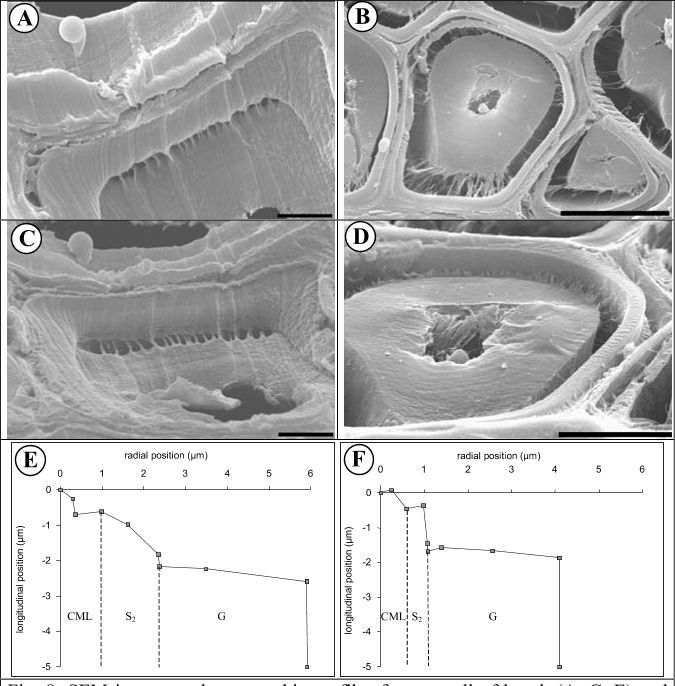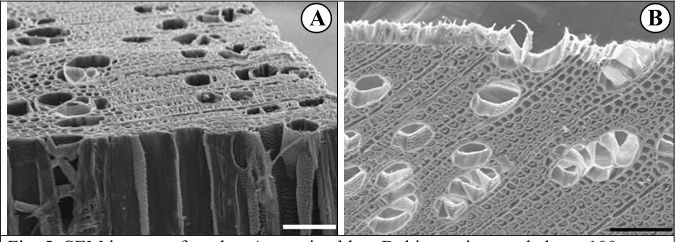




Did you find this useful? Give us your feedback













197 citations
...Further, in atomic force microscopy analyses of cut surfaces of tension wood (kept under water to avoid drying effects) Clair and Thibault (2001) observed pronounced longitudinal shrinkage of the G-layer relative to S-layers, corresponding to a 4.7% strain, which is much greater than the recorded…...
[...]
196 citations
...In previous research, the structure of the G-layer has been described as possessing gel-like characteristics: large shrinkage (Clair and Thibaut, 2001; Fang et al., 2007) and high rigidification during drying (Clair et al....
[...]
...In previous research, the structure of the G-layer has been described as possessing gel-like characteristics: large shrinkage (Clair and Thibaut, 2001; Fang et al., 2007) and high rigidification during drying (Clair et al., 2003)....
[...]
132 citations
118 citations
100 citations
...It is interesting to note that similar shrinkage of the gelatinous layer of fibers from tension wood, in which the lignin content is very low, also occurs in the same conditions of dehydration (Clair & Thibaut, 2001; Fig....
[...]
30 citations
...Keeping a sample in hot water (80°C) during two hours is known as a way to demonstrate viscoelastic and hygrothermal recovery of locked-in strains resulting from growth stresses (Gril & Thibaut 1994)....
[...]
29 citations